当日発送について
平日(営業日)の12時までにご注文が完了したご注文で、以下の条件に該当するご注文を当日配送いたします。
◯ご注文いただいた商品の在庫がすべてある場合。
◯お支払方法がクレジットカード決済か代引きの場合。
◯定休日はではない。
※受注状況や確認事項の有無などにより、お時間をいただく場合がございます。
定休日のご案内
土日祝日、お盆、年末年始などは出荷業務をお休みいたします。
Now Loading...
平日(営業日)の12時までにご注文が完了したご注文で、以下の条件に該当するご注文を当日配送いたします。
◯ご注文いただいた商品の在庫がすべてある場合。
◯お支払方法がクレジットカード決済か代引きの場合。
◯定休日はではない。
※受注状況や確認事項の有無などにより、お時間をいただく場合がございます。
土日祝日、お盆、年末年始などは出荷業務をお休みいたします。
魚を美味しく食べるためのプレートを作りたい、
という思いからデザインした食器です。
魚がはみ出さず、薬味がのせられて、取り除いた骨も美しく置ける、、、。
そんなプレートを考えました。
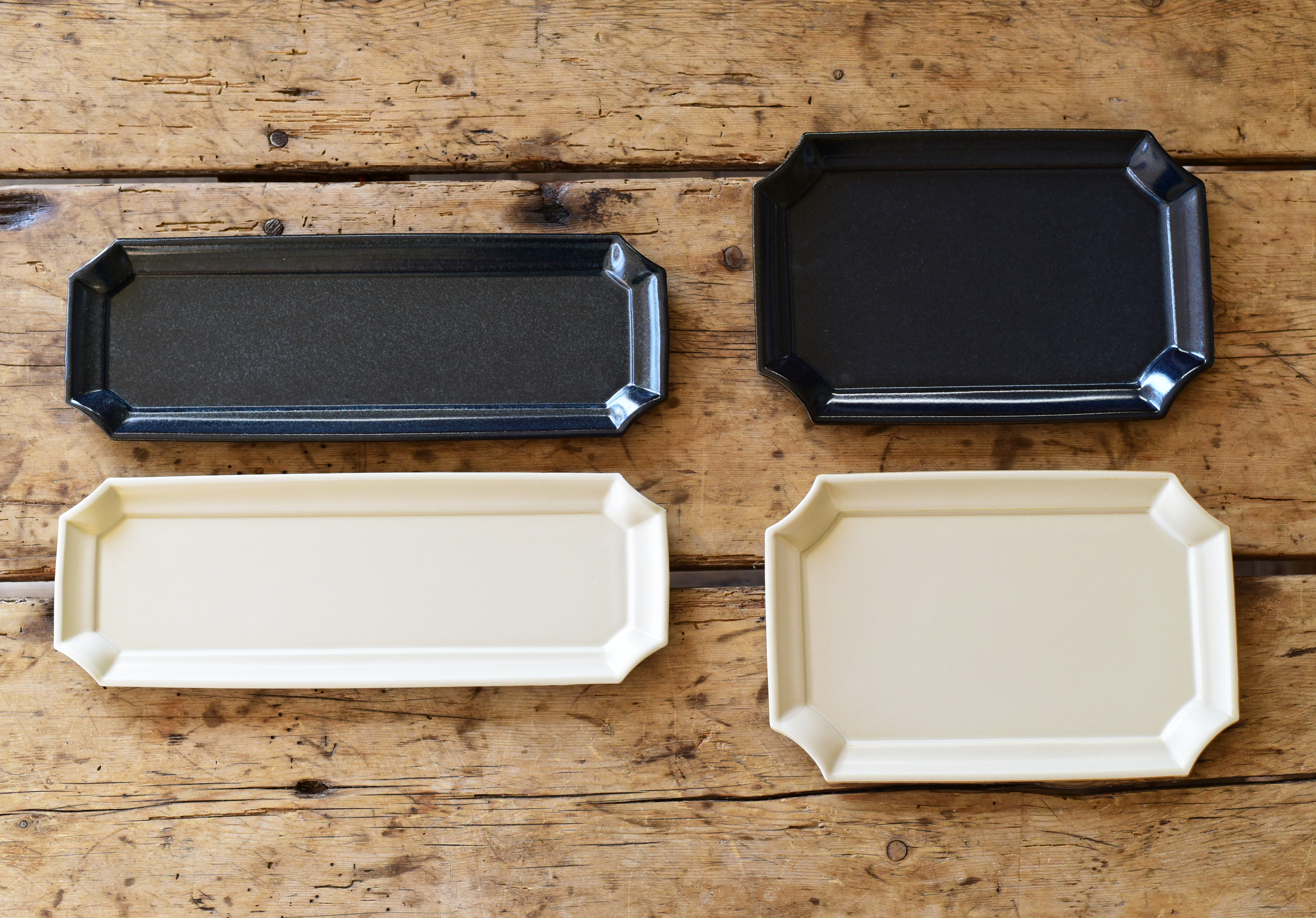
2サイズ展開で、31cm角皿は秋刀魚が盛り付けられるサイズ。
秋刀魚を切らなくても、一本まるごと乗せられます。
24cm角皿はアジの開きにぴったりのサイズです。
大根おろしを添えて骨もよけられるよう、奥行きをもたせました。
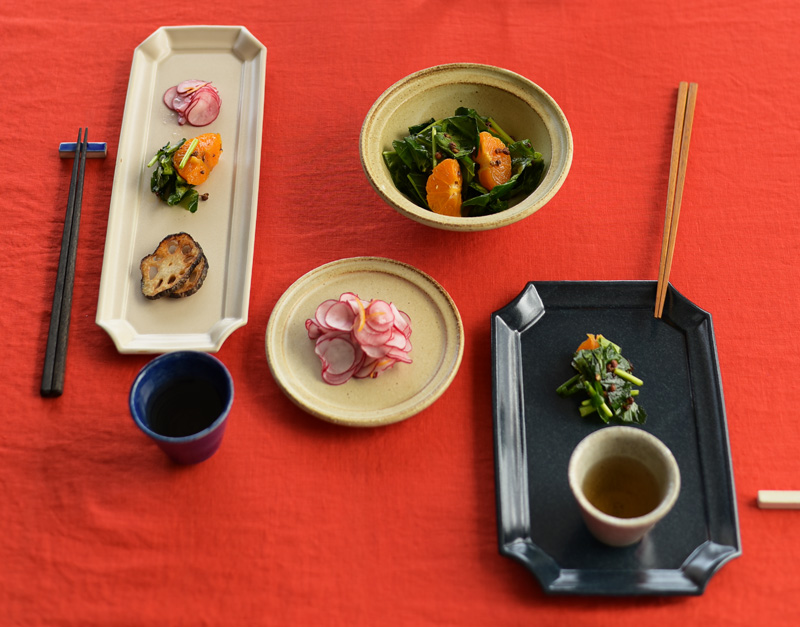
焼き魚はもちろん、角皿としての用途も様々です。
おにぎりや副菜を3品ほど盛り付けたり、
カヌレやケーキを盛り付けたり、
お菓子やおかずにも使いやすいサイズです。
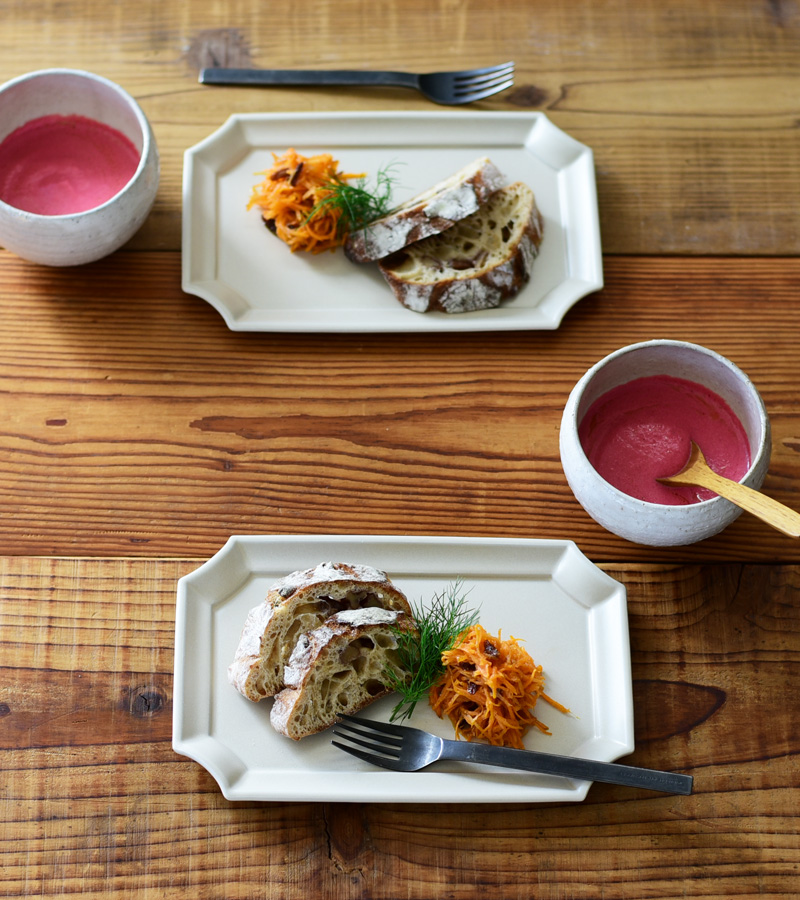
朝食や軽食にもちょうど良いサイズ感です。
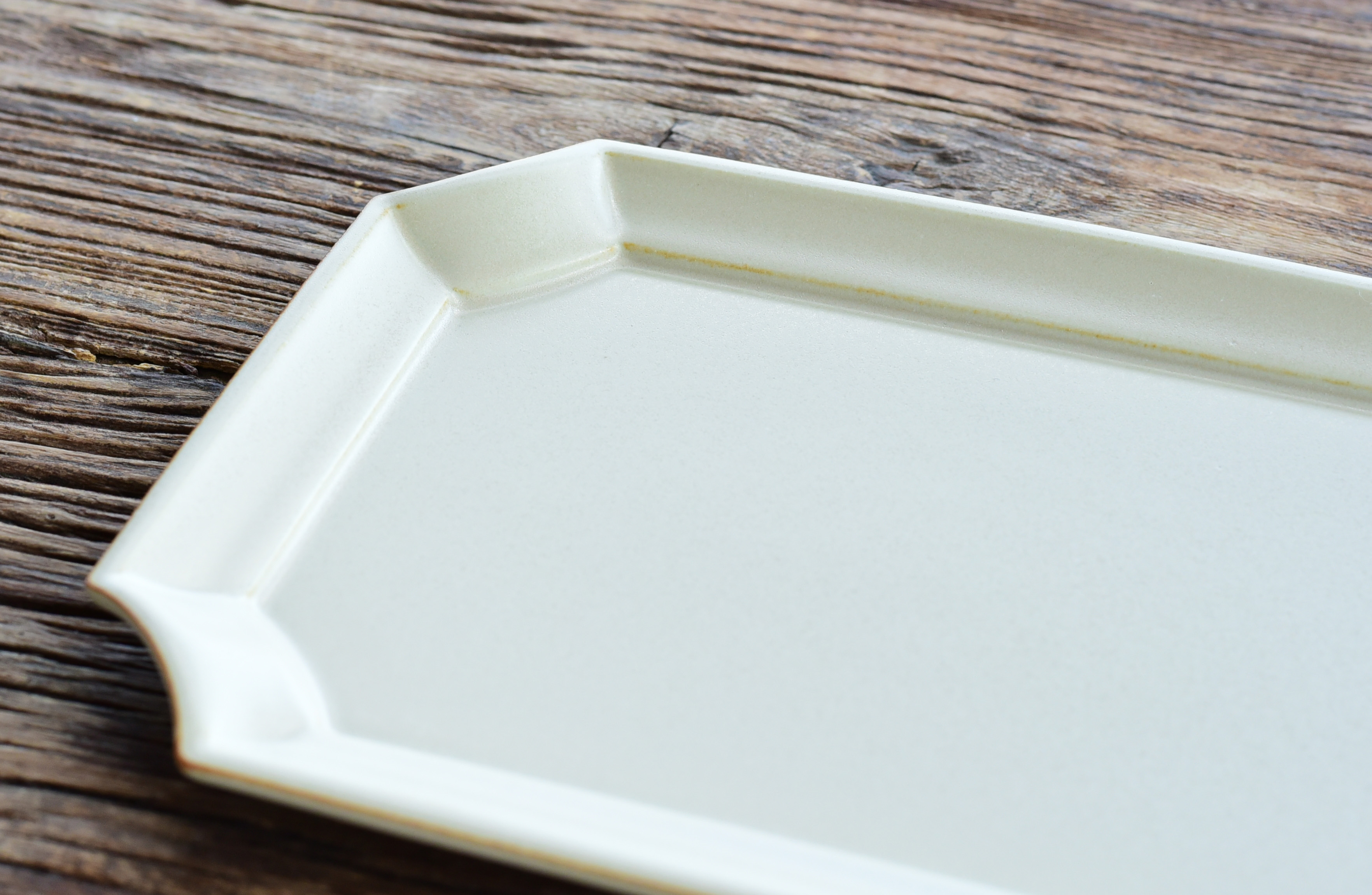
盛り付けた料理を囲う額縁のような装飾から
「縁取る」という意味を持つフランス語、border(ボルデ)の名前をつけました。
平らな盛り面から縁を立ち上げることで陰影ができ、装飾が際立ちます。
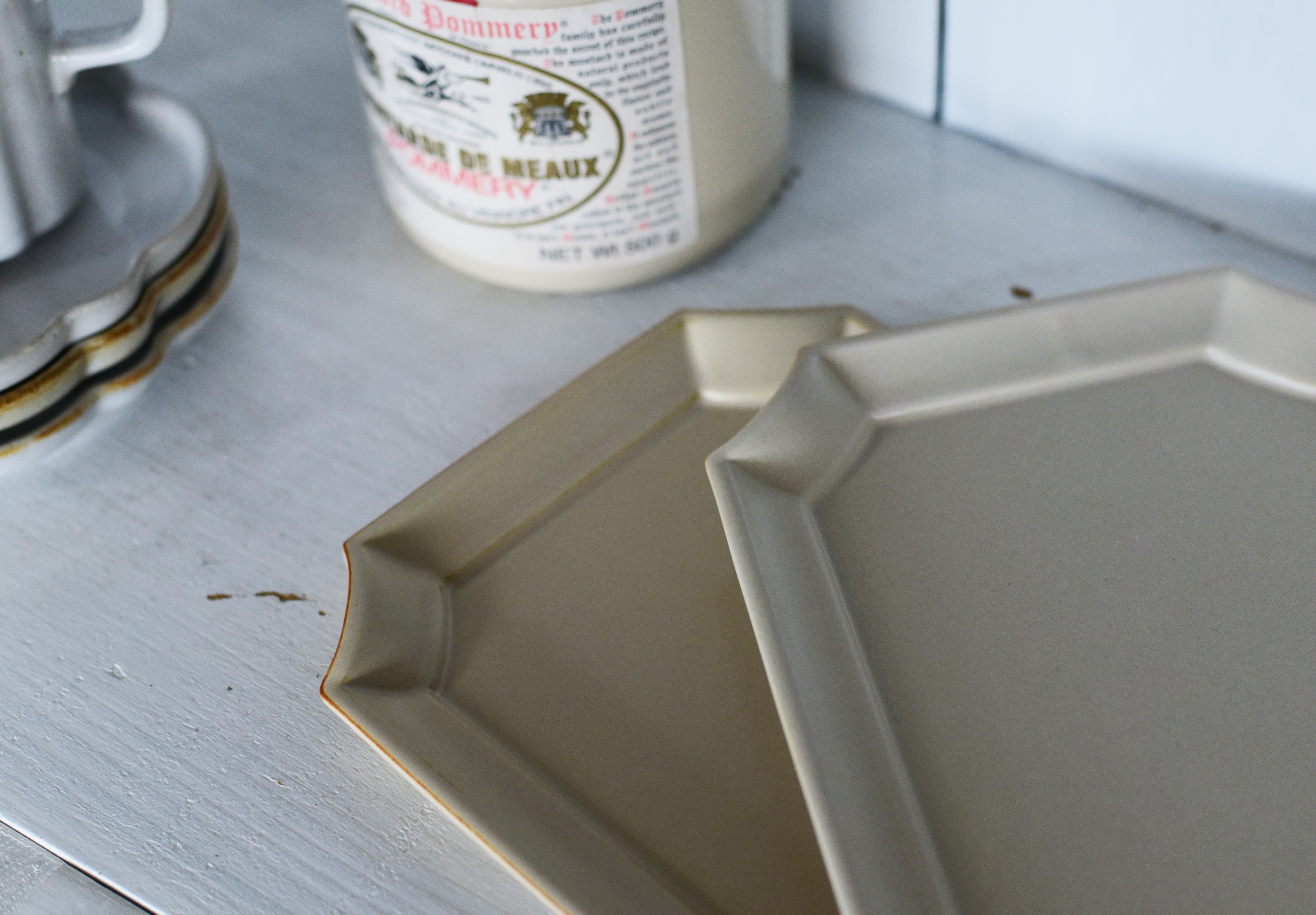
色は白とインディゴの2色。
料理が映える白の色味は、
焦げ感が出たり、釉薬の中に色々な色が見えるベージュがかった柔らかな白です。
インディゴは焼成する場所によって
青みが強かったり、黒が強く出たりと変化が面白く、
落ち着いた色味です。
古染土という茶色がかった土の影響もあり、表情豊かな色が出来上がりました。
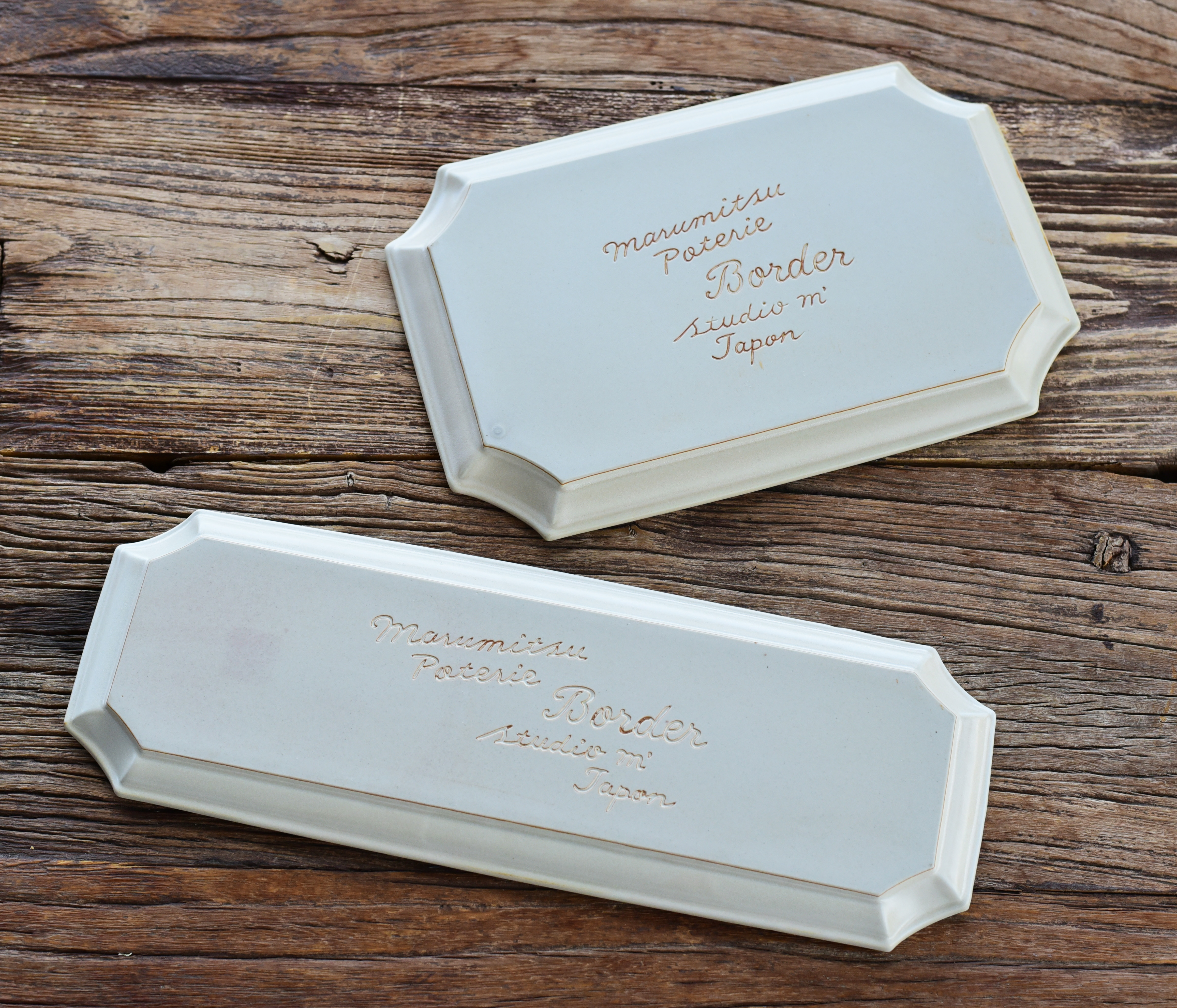
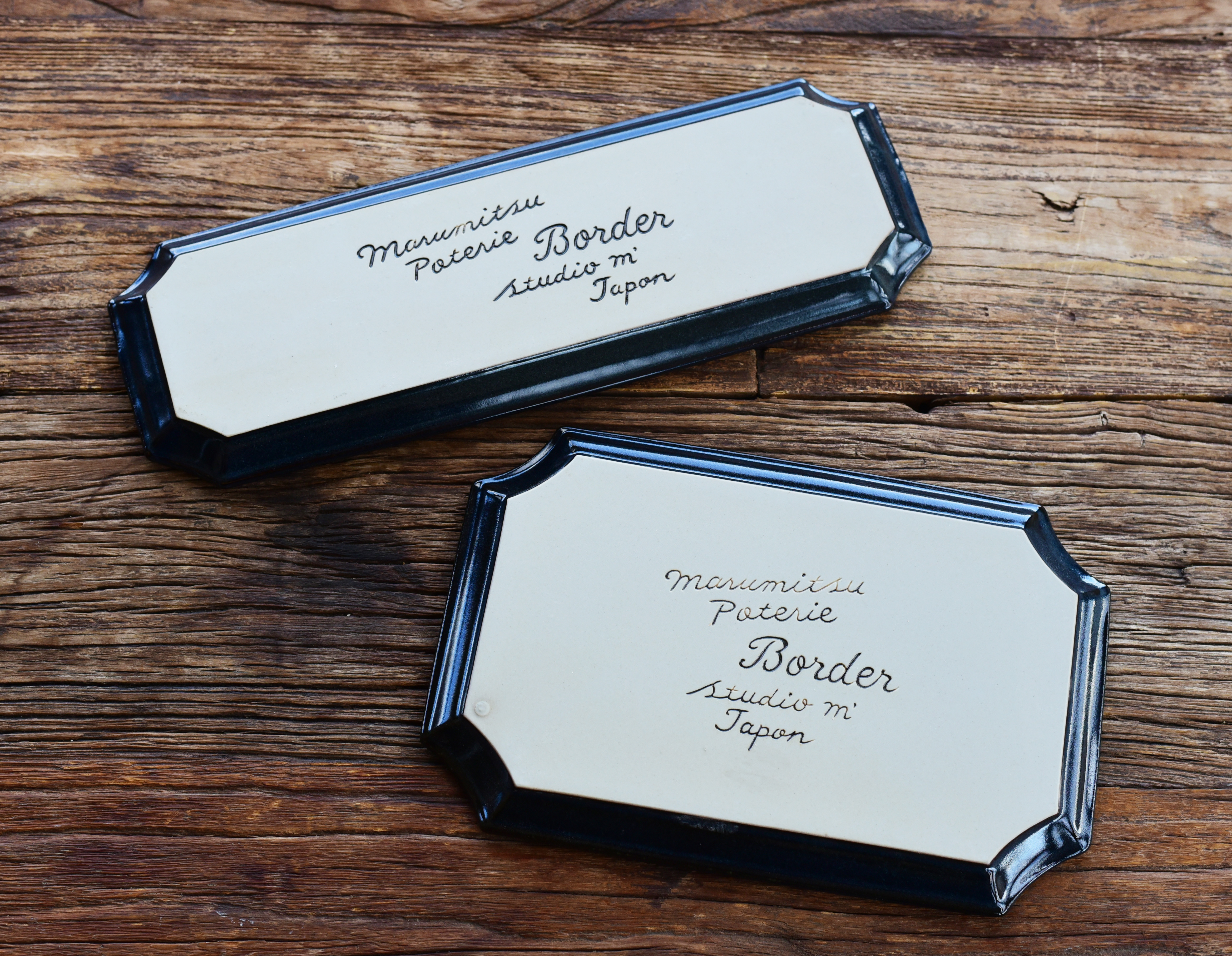
ロゴは裏面いっぱいにデザインしています。
凹んだ文字の中に釉薬が入ることで文字が浮かび上がり、
土の色との対比でかっこいい仕上がりです。
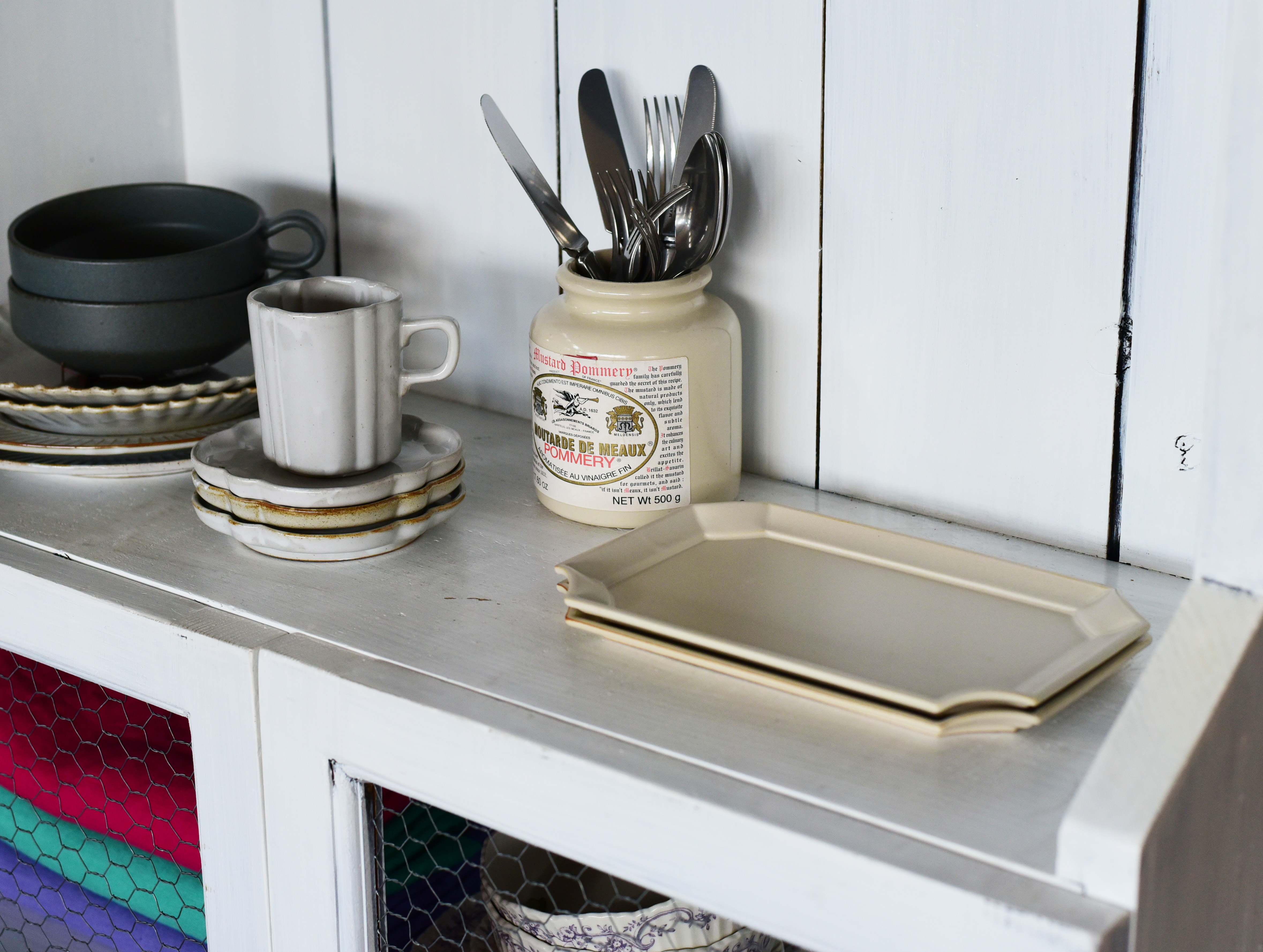
重なりもよく、
家族分揃えてもすっきりと気持ちよく収納できます。
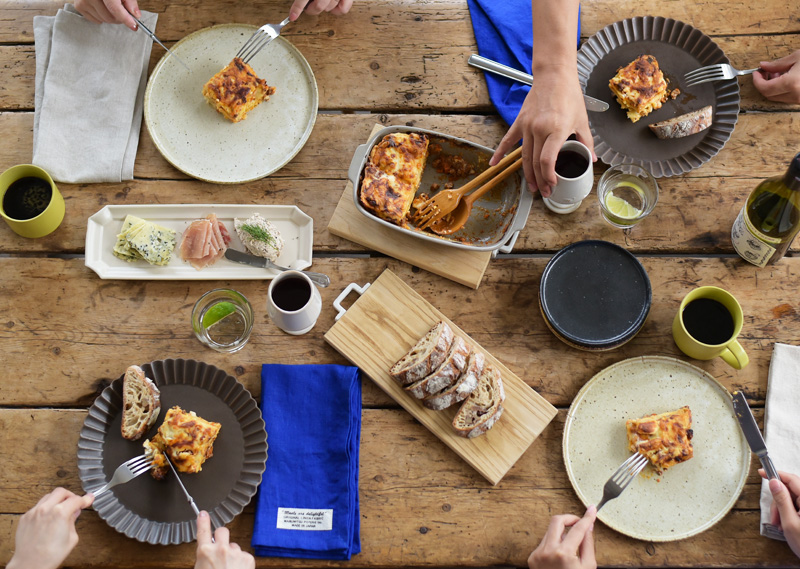
おつまみやパーティーの前菜、おやつや食事など
ボルデを使って色々な料理に挑戦してみてくださいね。